Bidston - The Hall
![]()
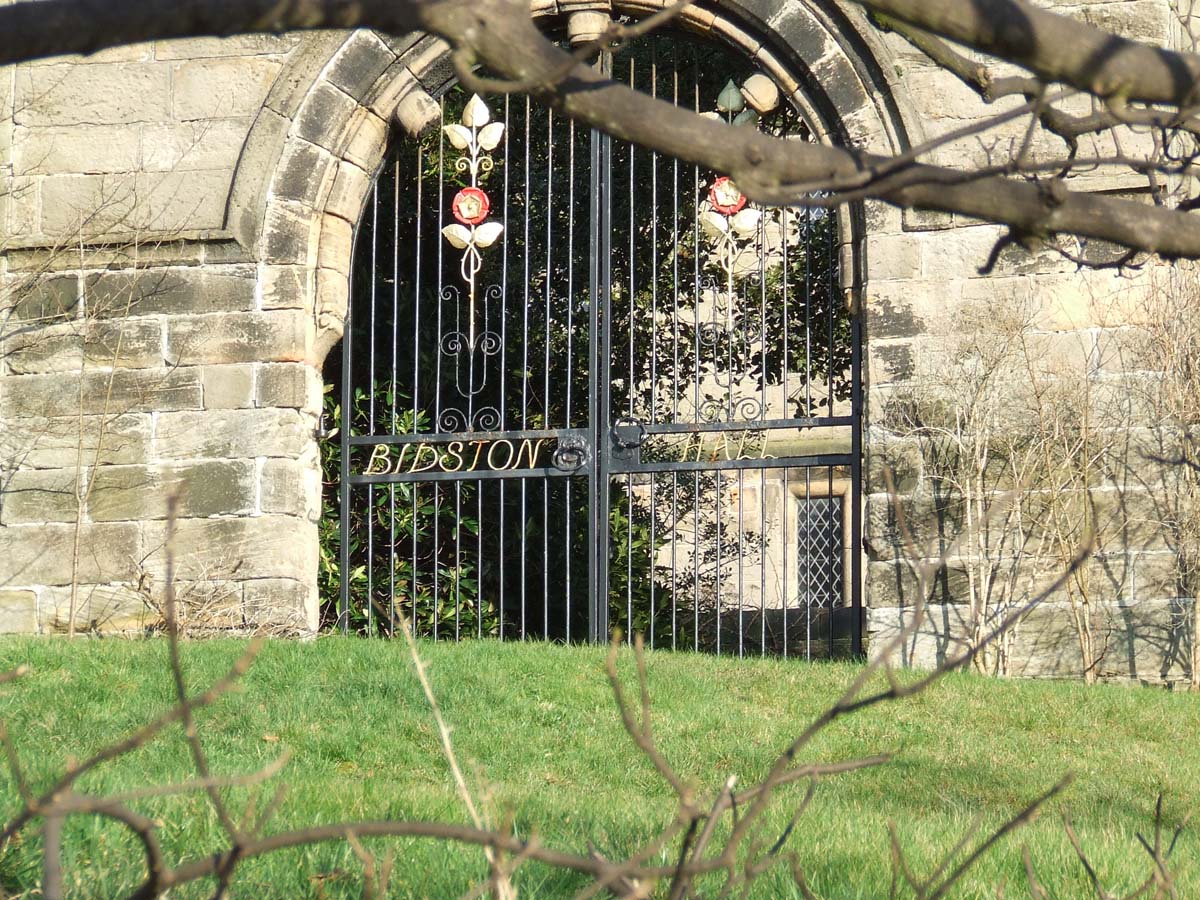 |
Bidston, just west of Birkenhead and south of Liverpool, is an area of Merseyside with a dark history and a possible association, very unlikely, with Jack The Ripper. Bidston Hall stands on a commanding situation on a rock of yellow freestone, of which material it is built. The western front has bay windows and projecting gables, and the entrance is in the centre of the front, formed in a semicircular porch, which rises the entire height of the building. The eastern side corresponds with the western, but has in addition a piazza along the lower storey. The front approach Is through a square court, with a handsome gateway having a singular arch highly ornamented with the cognizances of the Derby family. In some intermediatory purchase it is said Bidston Hall was won and lost at cards, to commemorate which a summer-house was built in the form of a club, as usually represented in that card, the foundations of which still remain in the picturesque grounds attached to the hail. See Mortincers History of the Hundred of Wirral. |
| The Hall was built by William, 6th Earl of Derby,
it is believed, in 1595, and now restored, stands as an example of what could
more easily be done to the group of three and four centuries old buildings
around the parish church 200 yards away. It later became known locally as (the)
Vyner Hall but that was purely on the residents at the time, the
Vyners. It was always Bidston Hall, from the beginning, and is such
now. Right: Bidston Hall, through the trees. 2003 rear left aspect |
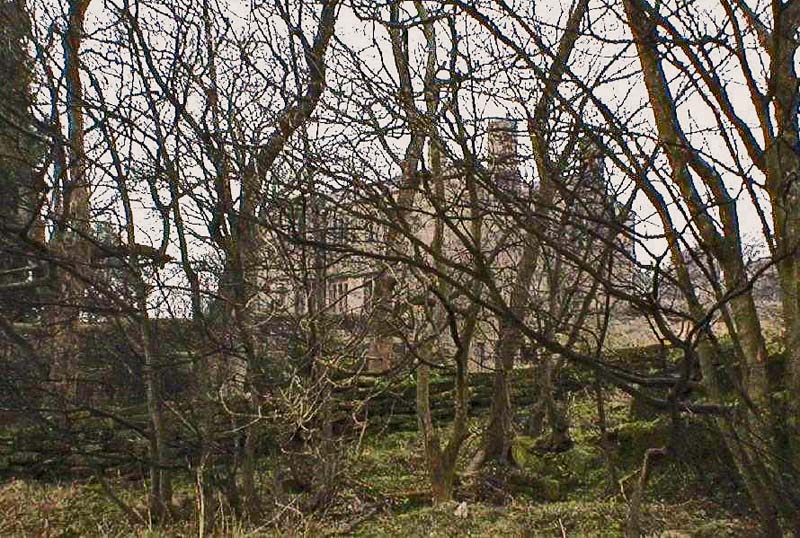 |
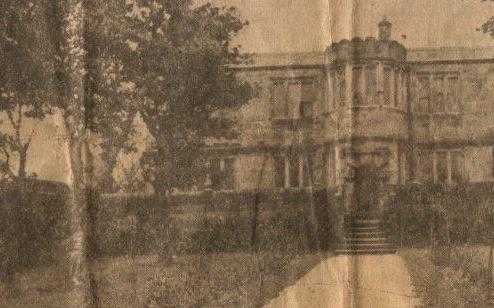 |
One of the worse murders of the 19th century can be attributed to the area. The discovery of the remains a family of five was found buried in the cellar of a building near Rain Hill. Emily Williams and her children; Bertha, Marie, Lilla and Sydney had been cruelly butchered. Suspicion soon fell on the surviving member of the family the father and husband who had fled. Police investigated and discovered that Williams had a dark past. Williams true name was likely to be Deeming. Deeming was also suspected for murder his wife Marie. He had grown up in the Bidston area of Birkenhead before going on to travel the world and using such esoteric aliases as Baron Swanston. Journalists writing at the time compared the knife slayings to those of Jack the Ripper in Whitechapel just a few years earlier. Some papers even speculated that Williams/Deeming may have been the Ripper, but then again so have many people been associated with the Ripper legend, however unlikely this could be. |
| The area also has associations with witches and witchcraft. Alex Sanders who was born Orrel Alexander Carter in 1926 at Birkenhead was known as the King of the Witches. Alex Sanders practised a form of witchcraft that was a blend of Crowleys magic and Masonic symbolism. Alex Sanders once attempted to summon a demon in front of an audience at the Hendon Classic Cinema, London, in 1971. The stunt went wrong and Sanders blamed the failure on one of the audience members wearing a silver Christian cross. Bidston Hill sits on top of a warren of tunnels. Some suggest that these tunnels are used to connect the houses of witches together and that the cellar of Bidston Hall acts at the nexus. More likely smugglers, as the tunnels were well used by them and smugglers would have spread tales of witchcraft and demons to keep people away. There is nothing like a good supernatural scare to keep unwanted attention away from the tunnels which were also beneath Wallasey but could not cross the Moss to the Hill. Strange also that, although I grew up in this area, I never heard of demons and suchlike. I think this is a rather fanciful theory without any basis in fact. |
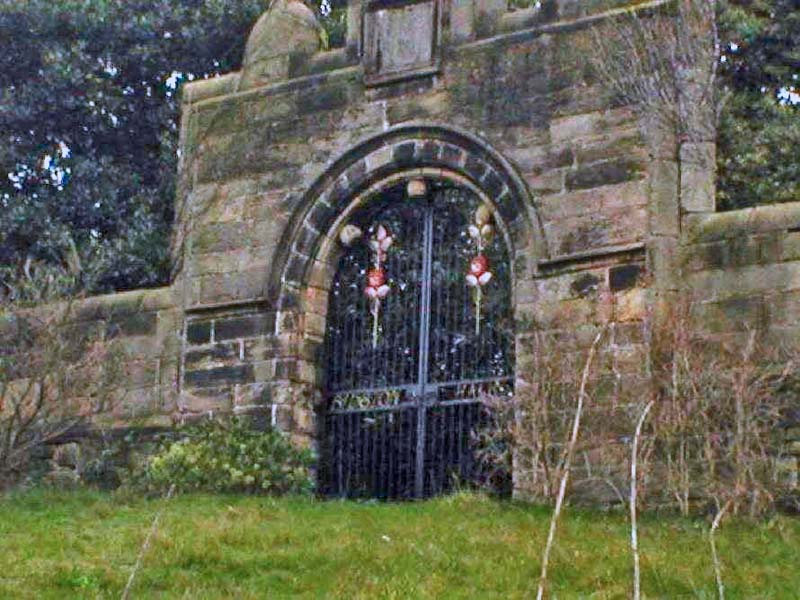 And the impressive gates to Bidston Hall. Atop the gates ate what look like, and were called so, three upturned wine glasses. Whether deliberate or local gossip, it allegedly portrayed the gambling which was prevalent at one time or another. These can just be seen in the image above and on the sketch below. Image 2003. |
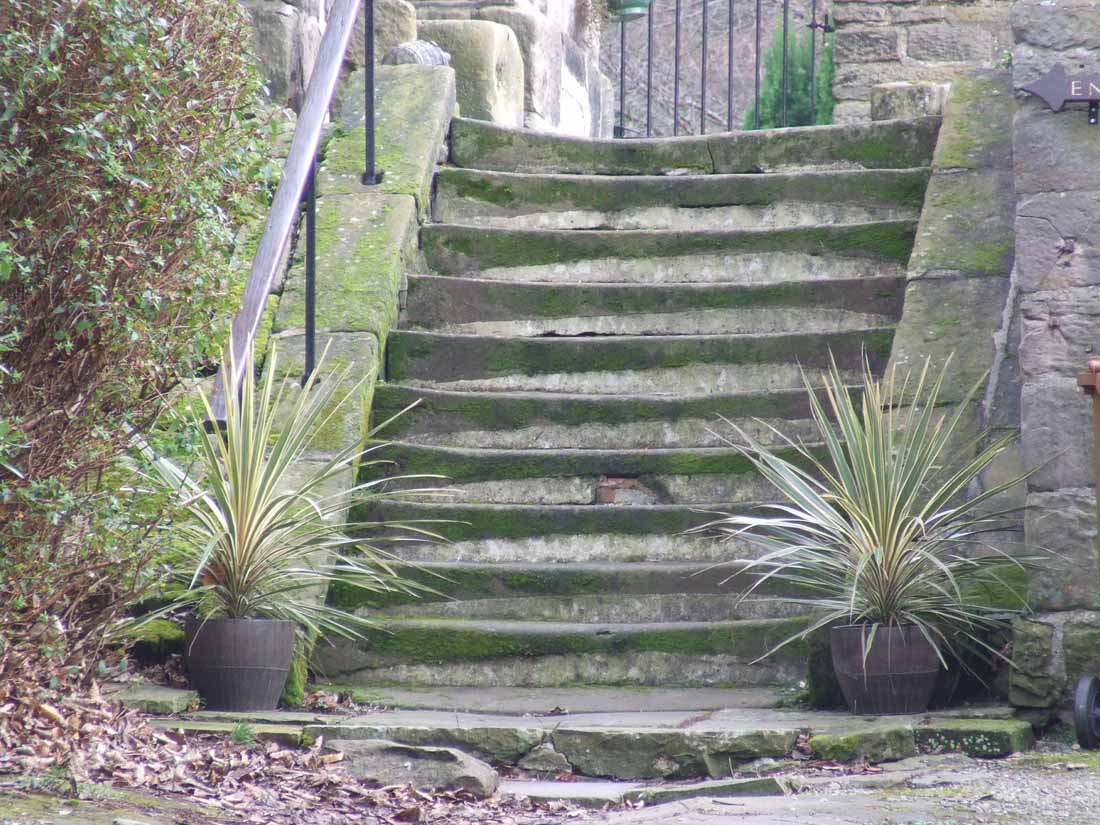 Steps at the side of Bidston Hall - Feb 4th 2009 |
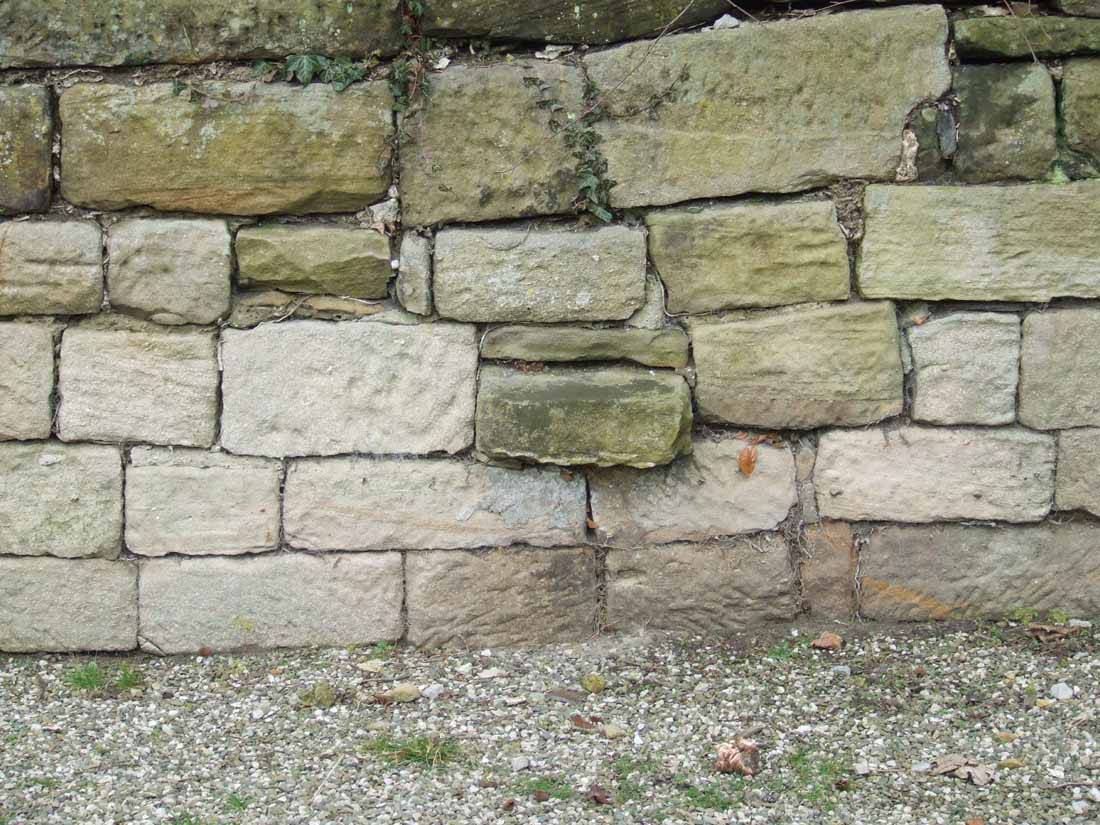 Innocent enough to look at, but I was wondering the significance of the extended block here, was it a mounting block for horse riding? At Bidston Hall Feb 4th 2009 |
| Visitors to Bidston Halls bedrooms especially women, have reported
unwelcome attention from paranormal entities during the night. Could this be
Williams/Deeming again? He certainly seemed to favour women. Other guests wake only to discover that they cannot move with some feeling an
oppressive weight on their chest or a force holding them down. The Bidston Hall cellars are also reported to be haunted. Mediums have
suggested that the lodge has been the scene of more than one death. Whatever the
reason behind the spirits in Bidston Hall, I do not think much investigation has
taken place and indeed who these spirits actually were? Right: Sketch of the gate showing the "upturned wine glasses", provided by Bill Hislop |
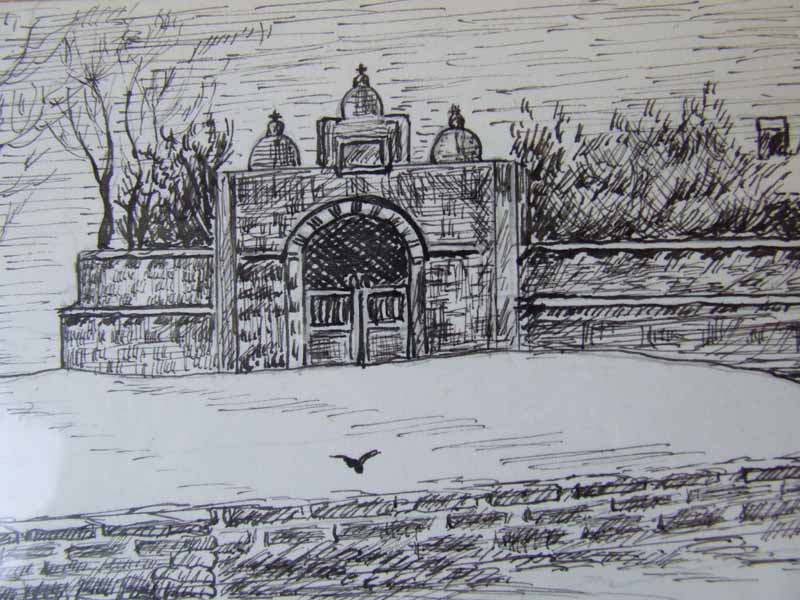 |
|
From the 15th Century to the mid 18th century,
the Lords of Man (Isle of Man) were the Stanleys, the Earls of Derby. Granted
trade freedom by Henry IV, the Isle of Man operated a free-trade policy,
considering English customs duties to be protectionist. The Derby's were
Royalists in the civil War and retreated to the Isle of Man when it became too
hot for them on the mainland. The Stanleys began their career as Foresters of
Wirral, being responsible for many landmarks on the Peninsula.
Leasowe Castle was
one, where they held the horse races later to become known as the Derby. This
relationship was paralleled in the 18th century by
smuggling links between
the Isle of Man and the Wirral. Traders would export goods to the mainland,
claim a refund of duties paid, then the uncustomed goods were shipped back to
the mainland. Right: The old entrance to Bidston Hall, Bidston. 2003 |
|
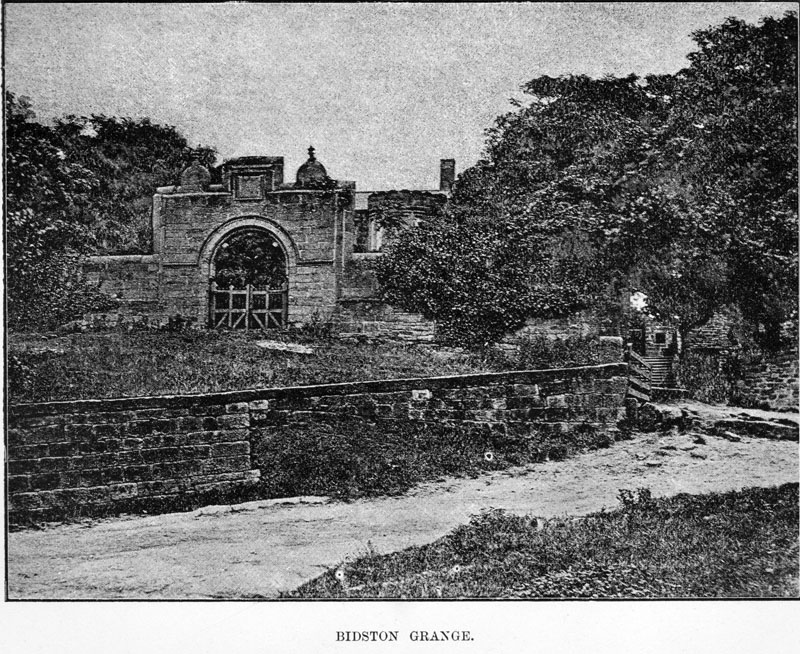 |
Bidston 'Grange' 1885 |
|
|
Left: Bidston Hall. 2003 |
| Right: Bidston Hall taken
from the back of the hall, on the Hill. images of inside the Hall |
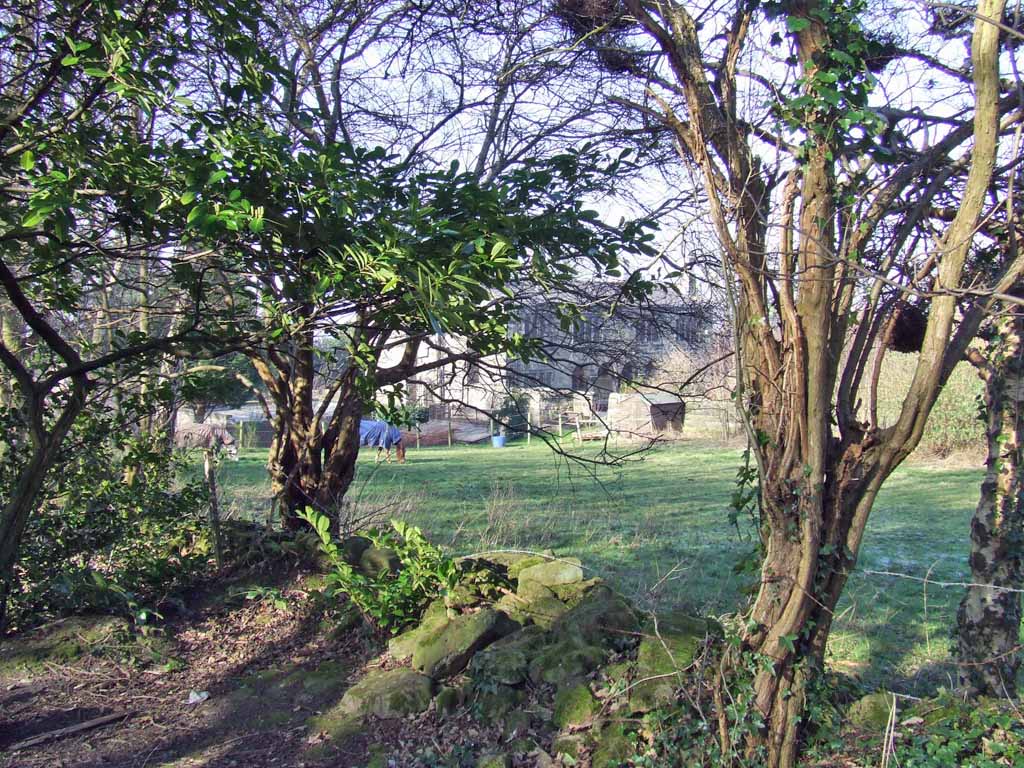 |
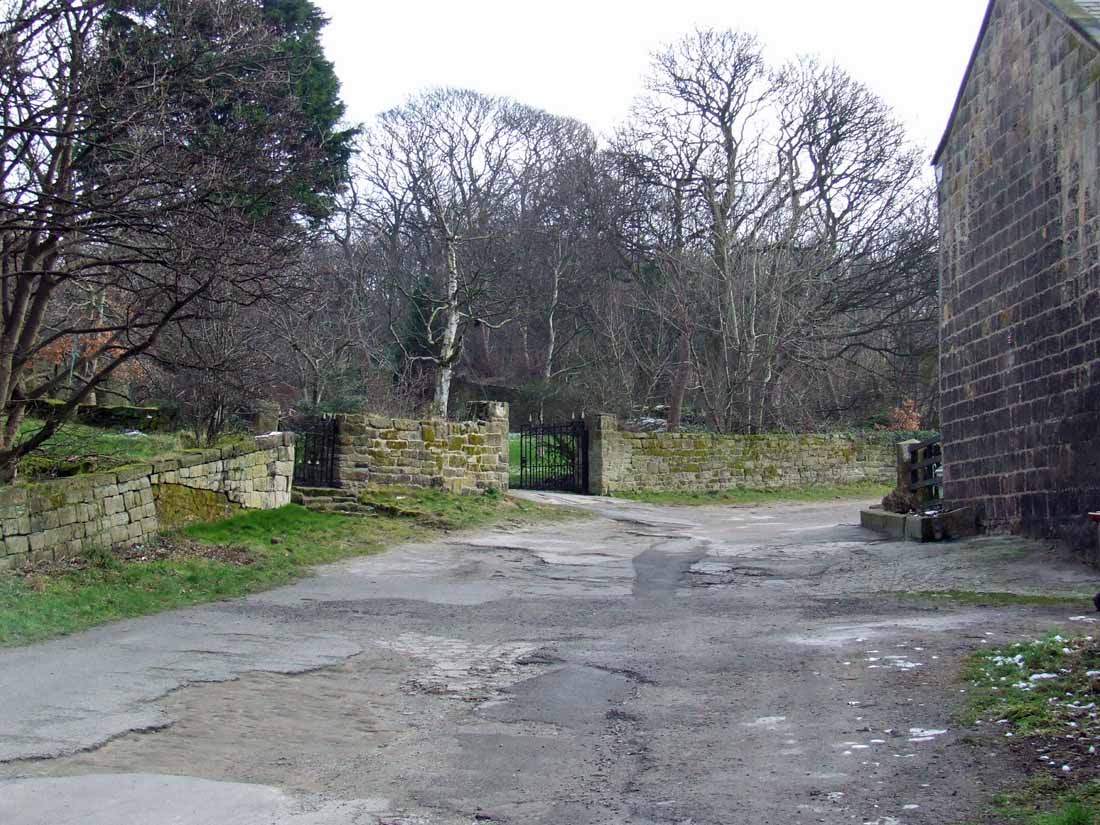 |
Right: Entrance to Bidston Hall on the left, this is the bottom of Eleanor Road which goes to Upton Road. The area by the iron gates and beyond is now blocked off from motor vehicles. See also note at base of this page. |
There was an advertisement on the internet for the sale of this Hall. This is how the advert describes Bidston Hall. £875.000. This is actually an old ad and I found it was listed at www.agents4u.co.uk who provided the information below. Brief History Few buildings can claim to have had the romantic and chequered life of Bidston Hall, today one of the last remaining Halls connected with the history of the Wirral. An original hunting lodge built in a deer park that had long been the property of the Stanley family (Earls of Derby), the house as it now stands was probable built in two phases - the main part constructed around 1595 with a Loggia added between the wings around 1617-20. However, there is evidence that an earlier building was present and incorporated in the re-structuring of the house in 1595. The Mason Marks found on the stonework throughout the house correspond to the same group of Masons, namely 61, who built Stonyhurst. The stone is thought to be Storeton stone and quarried locally. The Hall has changed little since leaving the hands of its builder. This is concentrated on the sixth Earl of Derby who used it as a shooting lodge and owned large amounts of land, including Leasowe where he held his famous races - which eventually lead to the Grand National. He was succeeded by his son, James, who regarded Cromwell as a usurper and withdrew to the Isle of Man (where he was Lord of Man) .On hearing that Charles 11 was returning, left the Isle of Man to join him, escaped after the King lost the Battle of Wigan but was captured at the Battle of Worcester and beheaded at Bolton. However, Charles 11 callously refused to help Lady Derby who continued to live at the Hall and rear her five children. Eventually the Bidston Estate came into the possession of Sir Robert Vyner, the London goldsmith. He also bought Fountains Hall and it was really Fountains where he spent most of his time. However, a lady known as Charlotte, employed by Sir Robert and nearly as well know to Charles 11 as Nell Gwynn, lived at Bidston Hall for a time and it was she who modelled for Britannia on our coinage. an email from Nicola Greenwood (May 2014):
I
can fill in the gap in its history from about 1901-1928 or so. My
grandfather E.T. (Ted) Evans married my grandmother Florence Margaret
Rowland in January 1901 in Thurstaston Church (the Evanses farmed
cattle
at
Thurstaston Hall Farm having owned a butcher's shop at no. 252 Grange
Road, Birkenhead). Ted Evans had recently returned (1898) from over a
year visiting New Zealand where he had hoped to settle and buy a
cattle farm, but his parents declined to send him the necessary money
so he came home again! I have transcriptions of all the letters he
wrote to his parents in Thurstaston from NZ during that year copied by
his mother into a notebook. The 1911 Census for Bidston Hall has the whole Evans family plus boarder and servants if anyone wants to verify the information. So in addition to the family there was a horseman, shepherd, my unmarried great-aunt described as "assisting housework", a boarder called Morton Brown Paton (cotton merchant), a female domestic servant, a wagoner and a labourer on the farm. Also on the Census my grandfather noted that the Hall had 15 rooms (not counting those to be excluded eg sculleries etc). Also I'd be interested to know who was the landlord at the time my grandparents lived at Bidston Hall. We assume Edward Tansley (Ted) Evans was a tenant farmer and didn't actually own the place, but really don't know for sure. Maybe he did buy it? The family weren't short of money as he'd expected his parents to send him out substantial funds to buy a farm and land in New Zealand a few years previously. I'd like to try and confirm whether he was tenant or owner, and if the former who the owner was, if possible. So for the time being there is a question mark over his being a tenant of the Hall. back to the narrative: For some years in the middle of this century, the Hall fell derelict until Mr. Maxwell Faulkner restored it during 1966-68 and with further thought and money having been spent upon it, the Hall is now one of the splendid buildings of the Wirral, representing a typical manor house of the sixteenth or early seventeenth century, and together with the careful modernisation provides a wonderful family home. SITUATION: The village of Bidston is mentioned in the Doomsday Book and its buildings are mainly constructed in mellow grey stone. It is situated in the northern section of the Wirral. Bidston Hall is situated on commanding high ground at the east end of the village. Access to the M53 motorway is a short drive away and it is well placed for daily travel and commuting to Birkenhead, Liverpool, Chester and the North Wales coast. |
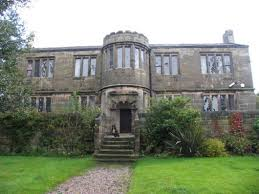  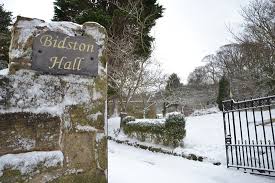 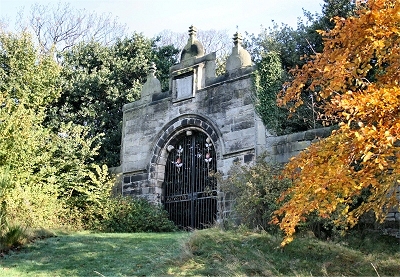 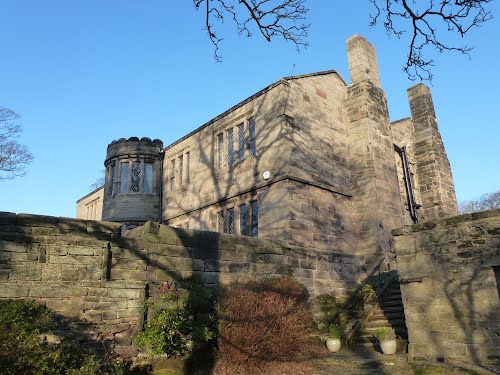  |
ACCOMMODATION: Situated in approximately two and a half acres of grounds on a sandstone ridge which has lovely views of the Wirral Plain, the Dee Estuary and Welsh Hills. Beautiful original features include exposed Storeton stonework, original flagged flooring, superb Great Hall, arched interior and exterior panelled doors with ornamental wrought iron furniture, open beamed ceilings, the galleried landing/study, glass quarterings on windows, lead light lattice windows and feature original stone fireplaces. The front wall incorporates a stone archway with tall ornamental wrought iron double carriage entrance gates with the inscription 'Bidston Hall'. Full width paved and walled terrace approached from the main central steps. SEMI CIRCULAR STONE PORCH Side stone seats and flagged floor leads to solid oak front door (approx 66 x 40) GREAT HALL 31'8" x 18'2" Simply stunning, with original stone flagged floor, recessed wide and deep stone fireplace with raised hearth, sandstone lintel and side pieces, glazed niche window looking through into the original Priest Hole. Two large double panel radiators; heavy open beam ceiling. Two large beautiful Sandstone windows to either side of the solid oak front door. Ceiling height 110. DINING ROOM 18'1"x 14'10" with original flagged flooring, having large stone fireplace with raised hearth, and wide grate beautiful window having feature lattice leaded stained glass with sandstone mullions and piers to the front elevation. Ceiling height 111. FIRST FLOOR: Approached by the staircase which divides, there is a small half-curved area that comes up to the First Floor open LANDING 36'6"x21'10" having two large lattice glazed windows with sandstone mullions and corner pieces; two large double panelled radiators; part pitched ceiling with exposed roof trusses and purlins, particularly old door to Boiler Room, doors off and small hallways into the bedrooms. |
|
| MASTER BEDROOM 21'11"x18'3" (25'8" into the circular bay) this feature bay has carved window seats and is made of Sandstone with mullions and stained glass shields and crests with spectacular views across the central Wirral plain, over Liverpool Bay and over the front garden to the magnificent Sandstone front gate. Central heating radiator. Huge sandstone fireplace with Yorkstone grate. End wall in the original exposed timber beams with plaster inserts. EN-SUITE 185 x 102 Fabulous en-suite comprising, corner bath with whirlpool feature, large walk-in shower cubicle, concealed cistern wc, bidet, vanity basin in white high gloss units. Flat screen television recessed into wall with remote control. Chrome ceiling downlighters. Ceramic tiles to floor and wall wet areas. Beautiful lattice leaded window with stone mullions, door to Master bedroom. BEDROOM (2) 15'0"x18'4" one wall in exposed original beams and plaster panels, window overlooking the front elevation to Bidston Church and across the central Wirral plain. Large sandstone fireplace with original sandstone grate. Central heating radiator. BEDROOM (3) 12'2"x 15'1" sandstone fireplace with hearth in York stone; window overlooking the rear garden; double panel radiator; T.V. aerial point, pedestal wash hand basin. BATHROOM (2) 85 x 89(max) Adjacent to bedrooms two and three with mahogany panelled cast iron bath with tiled surround with brass mixer tap and shower attachment. Low level wc with Mahogany seat and lid, bidet with mixer tap in brass; feature pedestal wash hand basin with mixer tap. Window overlooking the side elevation, double panel radiator. SEPARATE W.C. Low level wc in white, leaded glass window, Oak panelled door. BEDROOM (4) 15'3"x19'5" window overlooking the front elevation with sandstone mullions; double panel radiator, fireplace in sandstone with York stone hearth and mahogany panelling trim to the fire opening. Two walls are in the original timber panels with exposed beams and plaster panels. BEDROOM (5) 14'9"x17'8"(max) sandstone fireplace with York stone hearth, double panel radiator lattice leaded glazed window with sandstone mullions overlooking the rear garden. BATHROOM(3) 106 x 56(extending to 87) Adjacent to bedrooms four and five. Slipper bath with claw feet, low level wc, pedestal wash hand basin, shower cubicle and ceramic tiled floor. Window to side elevation with lattice leading and stone mullion, central heating radiator. OFF THE LANDING -Boiler room with cylinder with immersion heater, airing cupboard with slatted shelves. Ladder access to - Fully insulated roof storage area with lagged pipes and boarded floor. LARGE DINING/FARMHOUSE KITCHEN 23'0"x14'9" This is a fantastic room with ample space to accommodate a large farmhouse table. Two walls with exposed stonework, quarry tiled floor; interior leaded light window to Entrance Hall. Old fire opening with antique beams, Large three bay gas fired 'Aga'. Range of base units with tiled work surface and inset 'Belfast' sink unit with brass tap. Lattice leaded windows with stained glass panels inside circular sandstone mullions. External door to side elevation. If I had the money I would buy this - wonderful! |
|
| Exclusive images of
the inside of Bidston Hall obtained by Tony Franks-Buckley of https://www.facebook.com/HiddenWirralTours/ and http://hiddenwirral.org.uk/home/4583570707 (reprinted with permission May1 2016) See these on Bidston Hall Page 2 (c) Tony Franks-Buckley at the Hidden Wirral Tours web address |
|
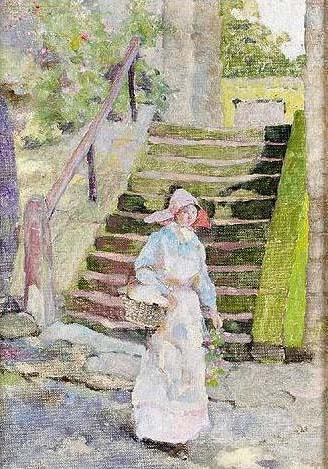 |
Left: A painting
by
David
|
| On occasion, I publish something, in good faith, which is in error. I am grateful for an email I received a while back correctling me on some information regarding Eleanor Road, at the Village end. I receive emails from all over, offering images, sometimes historical information. I take it, and use it, in good faith. | |
Water fountain:
http://www.firehydrant.org/pictures/glenfield-kennedy.html
Other Sites
http://visitbidston.blogspot.co.uk
I also thoroughly recommend the books of Kenneth Burnley, local Historian and lover of all things on The Wirral